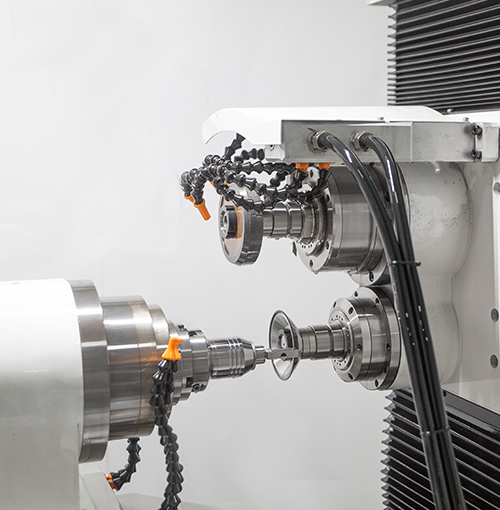Industry knowledge
How do different cutting tool materials impact tool life and performance?
High-speed steel (HSS) - HSS is a commonly used cutting tool material due to its relatively low cost and good overall performance. It can be used for a variety of cutting operations and is suitable for cutting both soft and hard materials. However, HSS has a lower hardness and wear resistance compared to other cutting tool materials, which can lead to shorter tool life.
Carbide - Carbide cutting tools are made from a combination of tungsten carbide and cobalt, which results in a very hard and wear-resistant material. Carbide is suitable for cutting hard and abrasive materials such as cast iron, stainless steel, and titanium. Carbide cutting tools have a longer tool life than HSS tools, but they are more brittle and can be prone to chipping or cracking if used improperly.
Ceramic - Ceramic cutting tools are extremely hard and wear-resistant, making them suitable for cutting very hard and abrasive materials. They can also withstand high temperatures without losing their cutting edge. However, ceramic cutting tools are very brittle and can be prone to chipping or breaking if subjected to shock or vibration.
Diamond - Diamond is the hardest material known to man and is used for cutting extremely hard and abrasive materials such as ceramics, glass, and composites. Diamond cutting tools have an extremely long tool life, but they are also the most expensive and difficult to manufacture.
What are the most common causes of cutting tool failure, and how can they be prevented?
Wear: Wear is the gradual loss of material from the cutting tool due to contact with the workpiece. This can result in a dull cutting edge and reduced cutting performance. Wear can be prevented or minimized by using a cutting tool with a hard, wear-resistant coating or by reducing the cutting speed or feed rate.
Chipping or Cracking: Chipping or cracking of the cutting tool can occur due to excessive forces, improper tool geometry, or improper material selection. This can result in a broken or damaged cutting tool and can cause damage to the workpiece. Chipping or cracking can be prevented by using a cutting tool with the appropriate geometry and material for the application and by ensuring that the cutting parameters are properly set.
Thermal Cracking: Thermal cracking occurs when the cutting tool is subjected to high temperatures during cutting. This can cause the cutting tool to crack or break. Thermal cracking can be prevented by using a cutting tool with a high-temperature resistance, reducing the cutting speed or feed rate, or using coolant to dissipate heat.
Built-Up Edge: Built-up edge is the accumulation of material on the cutting edge of the tool due to welding or sticking of the workpiece material to the cutting edge. This can result in poor surface finish and reduced cutting performance. Built-up edge can be prevented by using a cutting tool with a smooth and hard coating, using coolant to lubricate the cutting edge, or reducing the cutting speed or feed rate.
How do cutting tool coatings affect performance and efficiency?
Wear resistance: Coatings can improve the wear resistance of cutting tools by providing a hard and wear-resistant surface. Coatings such as titanium nitride (TiN), titanium carbonitride (TiCN), and aluminum oxide (Al2O3) can significantly increase the tool life of cutting tools.
Friction reduction: Coatings can reduce friction between the cutting tool and the workpiece, resulting in improved surface finish and reduced cutting forces. Coatings such as diamond-like carbon (DLC) and molybdenum disulfide (MoS2) can reduce friction and improve cutting performance.
Thermal stability: Coatings can improve the thermal stability of cutting tools by providing a thermal barrier between the cutting edge and the workpiece. Coatings such as aluminum titanium nitride (AlTiN) and chromium nitride (CrN) can provide high-temperature resistance and reduce thermal cracking of the cutting tool.
Chemical resistance: Coatings can provide chemical resistance to cutting tools, which can be important when cutting certain materials such as plastics or composites. Coatings such as diamond-like carbon (DLC) can provide excellent chemical resistance and prevent material buildup on the cutting edge.
